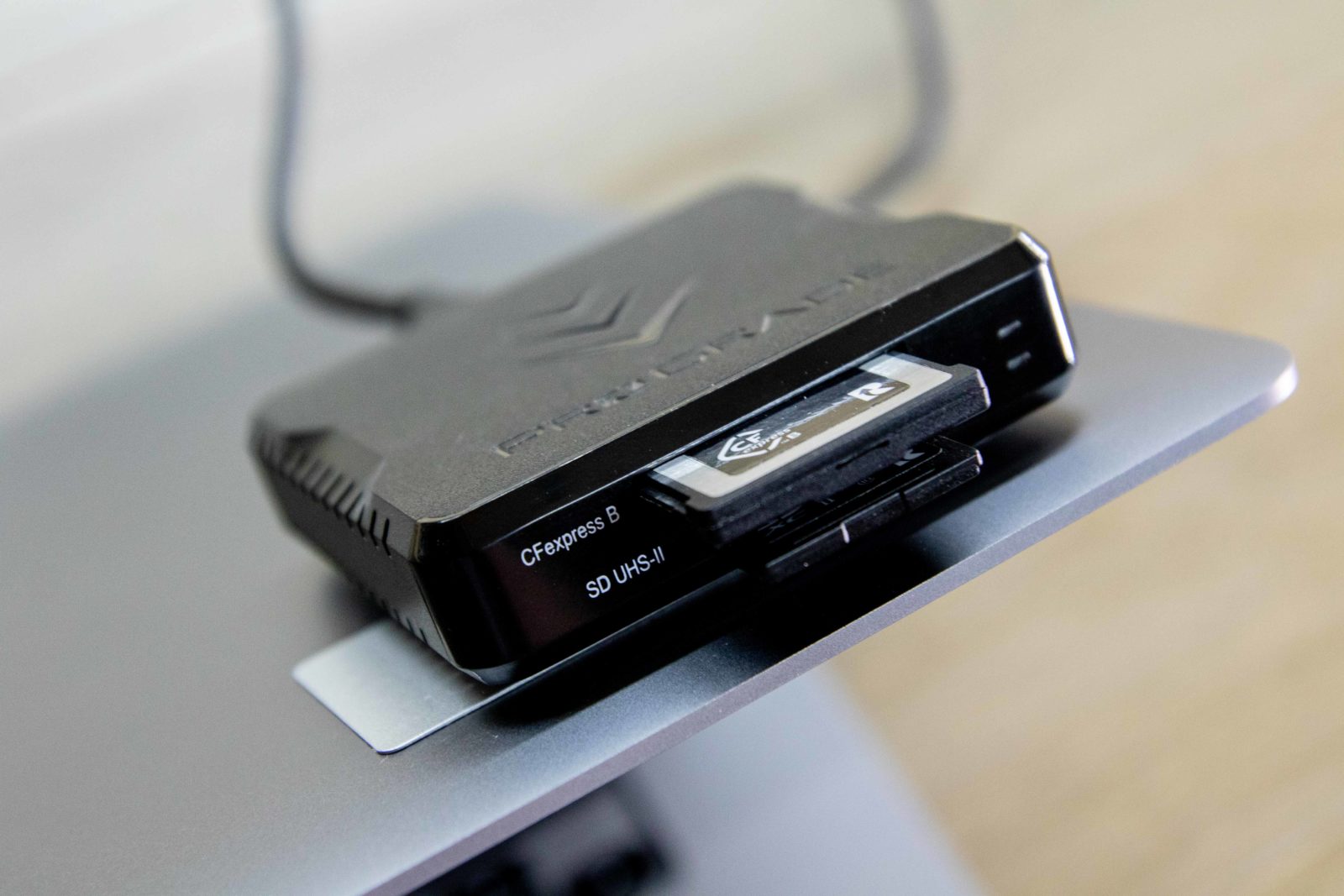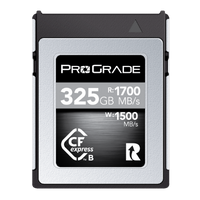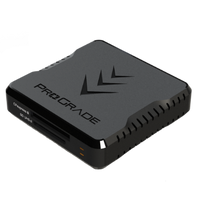Digital cameras come with cables that allow you to connect them directly to any computer. Plus, newer computers, including most laptops, have built-in card readers. So, why do professional photographers use external card readers? Aren’t they just useless artifacts? Allow us to answer all these questions and more.
What is a workflow reader, and how does it work?
Memory cards use flash memory. Flash memory stores data in an array of memory cells made from floating-gate transistors. Computers need to read information off the card to obtain that data from the flash memory. A workflow reader is a memory card reader that allows computers to do exactly that – access data on a memory card and transfer it to a computer. To do that, memory card readers utilize a whole group of standards, from simple physical connectors to complex electrical specifications and bus protocols.
Workflow Reader VS Camera Data Cable
Workflow readers are connected to the outside of a computer through a cable, exactly like cameras. So why the additional device? Why not hook the camera directly? Here are three reasons why seasoned photographers never use their camera’s data cable and opt for card readers instead:
1. Effectiveness: You can keep on shooting.
Whether in studio shooting portraits, on-location photographing events, or out in the wilderness chasing wild animals, you don’t want bottlenecks in your workflow. Put simply, the moment the card is full, you want to copy its contents; for both backup and speeding up your workflow. Pros often face tight deadlines, so they rarely return from shoots with a bunch of uncopied cards. They need to get to editing fast, so they copy cards on sets. Workflow readers allow them to continue shooting while the cards are being copied.
2. Speed: Workflow readers get the job done a lot faster.
A good card reader will always be faster than your camera’s data cable. Emphasis is on the word good. Cheap, consumer-grade readers are more like adapters, and instead of speeding up the data transfer process, they may actually slow you down. A lot. So you definitely want to avoid them.
Our Mobile Card Reader can transfer data at 5GB/s. For comparison, most generic data cables that come with cameras max out at 480Mbps, which is 0.05GB/s. That is an astronomical speed difference. To put that into perspective: what takes a regular data cable 50 minutes to complete, a ProGrade Digital card reader can do in minutes.
Check out the following video to see how different USB ports affect download times.
3. Data safety: Workflow readers offer greater protection against data loss.
When you transfer data directly from the camera to a computer, you rely on the camera’s battery. That’s not good. An older battery will drain really fast when using the data connection. Newer batteries in newer cameras do better, but it’s often still a hassle. For obvious reasons, we usually copy data after we are done with the shooting and not before, which means the batteries are often already nearly empty. If your camera should lose power unexpectedly during the data transfer, that interruption may corrupt the entire card. You can literally lose all that was left uncopied.
Workflow readers, meanwhile, do not run on batteries, nor do they require any special power cables. In fact, you can use them in the middle of nowhere, as long as your laptop is sufficiently charged. The minimum requirements are very low. Since professional workflow readers transfer large amounts of data in mere minutes, the power consumption is barely noticeable.
Workflow Reader VS Internal Memory Card Reader
For starters, you can copy multiple cards at the same time without compromising speed. That is essential for pros shooting simultaneously on two cards. Computers often have a single SD card slot, while workflow readers have many. So, when using built-in readers, you have to copy cards one by one. Workflow readers do not limit you like this. That aspect alone reduces your data transfer times by half.
Then there’s the previously mentioned speed aspect. For example, when it comes to Apple laptops, UHS‑II is available only on MacBook Pro’s introduced in 2021 or later, iMac’s introduced in 2020, and iMac Pros. With all other models, you get no SD card readers or, even if you do, you are stuck with the UHS-I bus. Unlike UHS-II, the UHS-I readers only have a single row of connector pins that don’t utilize the new Low Voltage Differential Signaling (LVDS) technology, so you get significantly lower data transfer rates.
Take the next step
Hopefully, this article helped to shed some light on memory card readers. Whenever you decide to get one, you can be sure to find it at ProGrade Digital. We manufacture high-speed workflow readers for every type of memory card professional photographers use, from SD Card Readers and microSD Card Readers to CFexpress Readers, and CFast Readers. For additional information, specs, and compatible accessories, check here: ProGrade Digital Workflow Readers, or feel free to contact us.





